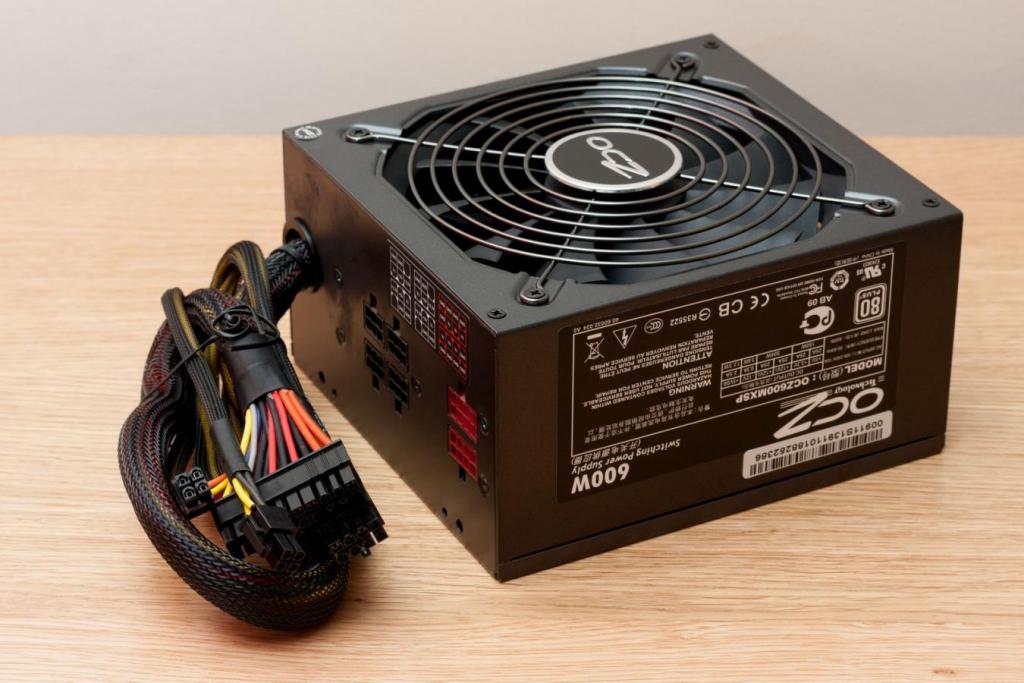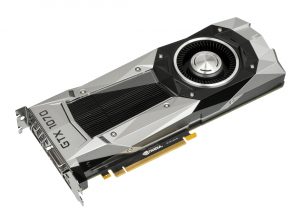The Power Supply Unit (PSU)

Desktop computers
Simply put, the Power Supply Unit or PSU is the power generator for your computer. It converts the Alternative Current (AC) from the wall outlet into the a Direct Current (DC) required by all electronic components. This process dissipates a lot of heat, so it needs proper and constant ventilation. Most power supply actually fail when the cooling fan fails.
The PSU is a bigger version of the little boxes that are attached to every power cords and other electronics. When there aren't any boxes, it's because it's small enough to be included in the electronic device itself, with adequate ventilation.
Laptops
Laptops do not need a power supply like desktop computers. Indeed, laptops have both an external and internal Power supply.
- The PSU in a laptop takes the form of the big black block on the electrical cord.
- They also have an internal battery which serves as an Uninterruptiple Power Supply (UPS)
This allows you to work when the power isn't plugged-in and seamlessly connect it to the power outlet. However, we do not recommend using laptops for 3D work or 3D rendering, as you can see in our article on laptops vs desktops.
What to Look For
Maximum Power (W)
You need a PSU that has sufficient Power Wattage (in Watts), to support all the components inside your computer. The CPU and GPU both consume a lot of power, sometimes up to 140W and 250W respectively. You should choose the CPU, GPU first, before buying your power supply to make sure it will have sufficient wattage. Afterwards, make sure the computer case you choose can fit your PSU. Here are the commonly used power capacity:
- 500W sufficient for systems without a dedicated graphics card
- 600W Base for 3D home systems
- 750W Adequately safe for professionnal systems
Connectors
If you can, choose a PSU that has modular connections. This means that different wire combinations can be added, evolving according to the your needs. This removes unused cables hanging loose and unnattached inside your computer case.
Also, make sure that the PSU has the wires needed to conenct your video card (GPU) to make sure they're compatible. There are a few different variations available.
- 8 pins
- 6 pins
- 4 pins
If the PSU doesn't have the right connector, the video card probably won't work fully. Modular PSUs allow you to switch more easily to the compatible connectors you need, and they often include the, all. But if the right cables aren't provided in the box, it probably means that it isn't compatible, even if it's modular. However, the good quality PSUs have all the different combinations possible to connect any current-day video card.
* Never touch the power supply or dis/connect wires while the computer is in function.
Reliability Certification
The power supply needs to keep a consistent voltage to all of your computer components. A bad quality or failing power supply will send small variations in electricity and damage all your components. Sometimes this happens slowly, but other times, it's instantaneous.
To assure reliability, you should find a PSU that has an official certification guarantee.
- Bronze
- Gold
- Platinum
This guarantees a certain maximum range of power variations, throughout it's lifecycle.
Brands
Antec is the most common PSU in pre-built system, and it does an ok job, but we recommend these good quality brands instead.
- EVGA
- Corsair
- Cooler Master
- Thermaltake
Price
You should expect to pay between 75$ to 150$ for a good power supply. It is always a good investment because it safeguards all of your other precious components from deteriorations.

UPS
An uninterruptible Power supply is an addition to the PSU that acts like an external battery. It can give you time to save your work, often automatically, in the case of a power outage. It also regulates the input voltages to protect your PSU itself. It is an optionnal, but welcome addition to any serious work system. You can read more about it in our article on Uninterruptible Power Supplies (UPS).
Recommendations
Value
Recommended
Extra
Connected Components
Go to the 'computer hardware' table of contents:
Guide on Finding the Optimal Computer Components
Tell us what you think, we welcome your comments! Did we miss something?
Join the Wombats
Opt-in our occasionnal newsletter to be the first to be informed of our new tutorials series, original content updates, special offers and important announcements! It’s free and spam-free, plus you can unsubscribe at any time.
Follow @3Dwombat on Social Media







